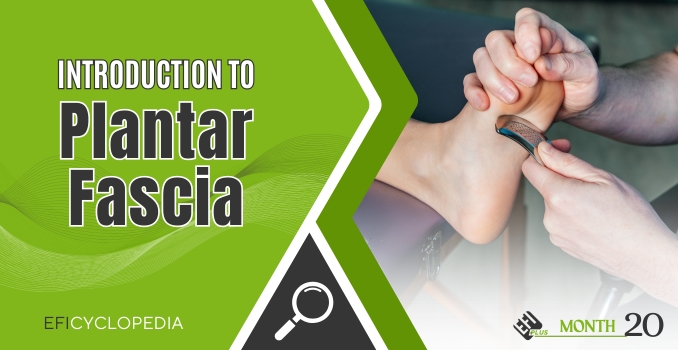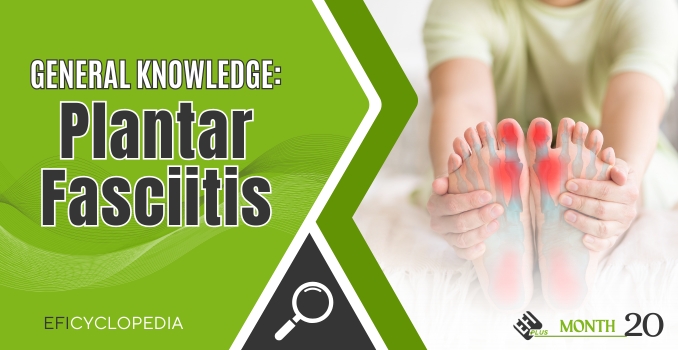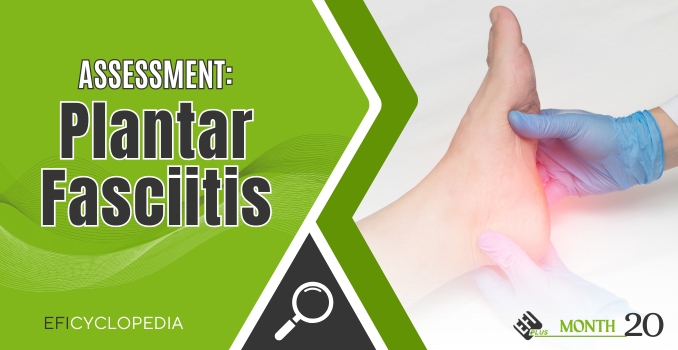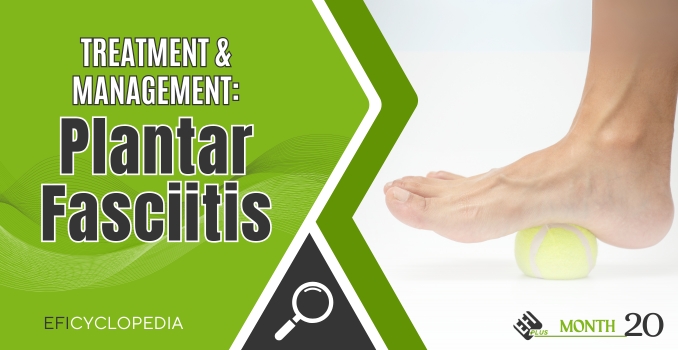Month 20
Fascia
MONTH 20 OFFER: PLANTAR FASCIITIS RELIEF IN 7 DAYS
Walk and run freely again—foot pain relief starts here!
In our 20th month of the EFIcyclopedia, we're taking on plantar fasciitis head-on! This condition, a leading cause of heel pain, arises from inflammation of the plantar fascia due to repetitive strain. Join us as we uncover the mechanics of this injury, delve into its underlying causes, and share practical management strategies to help you get back on your feet and back in action.
A deeper understanding of the plantar fascia and foot anatomy can help you manage pain and maximize your physical performance.
WHAT YOU NEED TO KNOW: Finding solutions to plantar fasciitis begins with understanding its nature. This in-depth guide delves into the foot’s anatomy and uncovers the key factors contributing to this condition.
- Understanding the Anatomy: Discover the details of the plantar fascia to gain a thorough understanding of its structure, function, and role in supporting your foot's arch, absorbing shock, and aiding in walking.
- Examining the Root: Explore factors contributing to plantar fasciitis, including increased activity, foot structure, surfaces, footwear, body weight, and underlying conditions like lupus or rheumatoid arthritis. Understanding these causes supports effective treatment and prevention.
- Know the Signs: Plantar fasciitis is recognized by its hallmark sign: heel pain, often sharp or dull, worse in the morning or after rest. Knowing these signs can help you differentiate it from other types of heel discomfort and guide you to the right treatment plan.
HOW: Become familiar with how doctors diagnose plantar fasciitis. They review your medical history, evaluate the location of your pain, and rule out other causes such as nerve compression or fractures. They may also examine foot movement, check for swelling or discoloration, and use imaging tests like X-rays, MRIs, or ultrasounds when necessary.
WHAT TO DO: Gain insight into treatment techniques and lifestyle changes to prevent plantar fasciitis, and take steps to enhance your foot health.
Home treatments like rest, icing, and anti-inflammatory drugs like NSAIDs or lidocaine are often the first steps in treating plantar fasciitis.
If these options don't ease the pain, a corticosteroid injection directly into the damaged section of the ligament can help. Your doctor can do this in their office. But, if your pain is acute or your condition is chronic, these shots are usually effective for only short-term relief.
- Individualized Management Approach: Incorporate specific stretches and exercises to boost flexibility, strength, and stability in your calves, Achilles tendon, and plantar fascia. Strengthening the lower leg muscles can further improve ankle stability. Together, these activities help alleviate pain, support recovery, and reduce the risk of recurrent plantar fasciitis.
- Prevention and Management: Enhance the health of your plantar fascia to minimize the risk of developing fasciitis through holistic approaches like thermal modalities, pain medications, practicing targeted stretches, and maintaining balanced nutrition. These strategies may aid in pain relief, tissue healing, and overall foot health.
WHY THIS MATTER: As you gain greater awareness of your plantar fascia and its related structures, you’re empowered to make informed decisions, evaluate treatment options, and choose those that best meet your needs, supporting better health.
- Quality of Life Improvement: The presence of foot pain can significantly impede an individual's ability to engage in daily activities, which adversely affects your overall quality of life. Identifying the source of the pain is crucial for effective treatment and a return to a pain-free life.
- Informed Decision-Making: A thorough grasp of plantar fascia and foot structure gives individuals the tools to create personalized treatment approaches, lifestyle modifications, and self-care habits that suit their preferences and health aspirations.
Don't let plantar fasciitis sideline you! Join us this month for a special discussion on plantar fasciitis, presented in the EFIcyclopedia. Let us guide you on a journey to a pain-free, active lifestyle and vibrant health!
Introduction to Plantar Fascia
Plantar Fascia/Aponeurosis is the modification of the Deep fascia, which covers the sole. It is a thick connective tissue that functions to support and protect the underlying vital structures of the foot. The fascia is thick centrally, known as aponeurosis, and is thin along the sides. The fascia consists of three parts:the medial, lateral, and central parts, respectively.
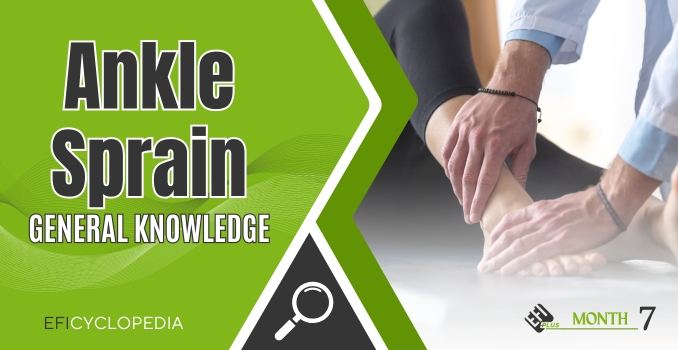
Ankle - General Knowledge
The ankle joint is as vital and versatile as the other structures in human anatomy. Delving into its anatomical complexities, physiological roles, and clinical ramifications is a journey that warrants in-depth exploration. Thoroughly scrutinizing the basic principles and latest developments and comprehending every aspect of this extraordinary joint's anatomy, biomechanics, and functionality enables healthcare providers to accurately evaluate patients and create customized treatment strategies aligned with their unique needs and objectives.
General Knowledge: Plantar Fasciitis
Plantar fasciitis is one of the most common causes of heel pain. It involves inflammation of a thick band of tissue that runs across the bottom of each foot and connects the heel bone to the toes, known as the plantar fascia.
Assessment: Plantar Fasciitis
Plantar Fasciitis (PF) is one of the most common causes of heel pain, often affecting individuals who engage in weight-bearing activities such as running, walking, and standing for long periods. It is characterized by inflammation of the plantar fascia, a thick band of tissue that connects the heel bone to the toes.
Treatment & Management: Plantar Fasciitis
Plantar fasciitis is a common and often painful condition resulting from inflammation of the plantar fascia, the thick connective tissue supporting the arch of the foot. Effective treatment and management aim to relieve pain, reduce inflammation, and address the underlying causes. This report outlines evidence-based strategies for managing plantar fasciitis.

